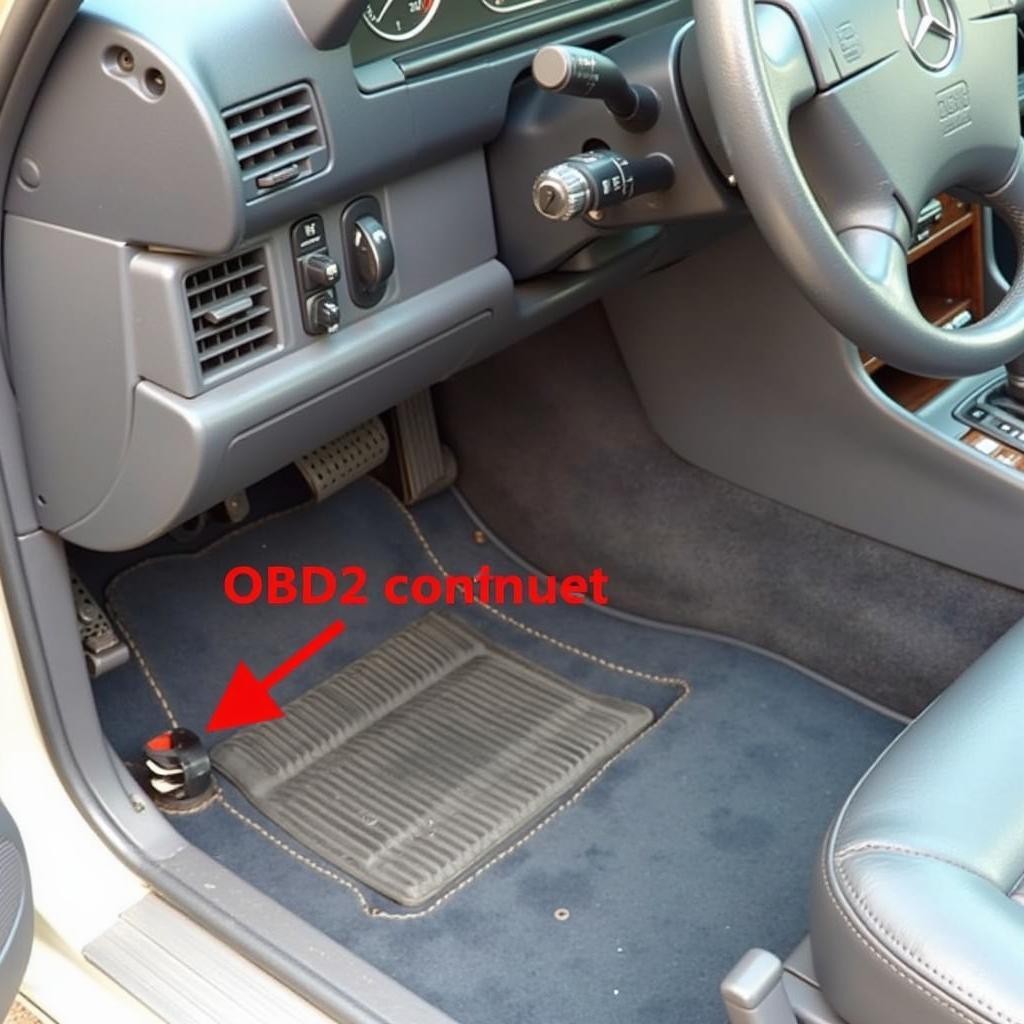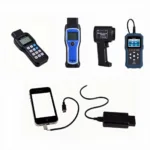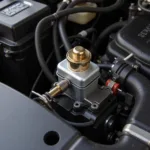The Mercedes Benz E320, a classic model from 1996, continues to turn heads with its timeless design. But like any vehicle of that era, it might require some under-the-hood attention. This is where an OBD2 scanner becomes your trusted co-pilot. Whether you’re a seasoned mechanic or a DIY enthusiast, understanding how to use an OBD2 scanner on your 1996 E320 can save you time, money, and potential headaches on the road.
Demystifying OBD2: What Does It Mean for Your E320?
OBD2, short for On-Board Diagnostics, is a standardized system that acts as your car’s internal communication network. Think of it as your E320’s way of telling you what’s happening under the hood. When your E320’s “Check Engine” light illuminates, it’s signaling that something isn’t quite right. An OBD2 scanner acts as the translator, deciphering those cryptic codes and providing you with valuable insights into your car’s health.
Choosing the Right OBD2 Scanner for Your Mercedes E320 (1996)
Selecting the right OBD2 scanner can be overwhelming, especially with a plethora of options available. For your 1996 E320, you’ll want a scanner that’s compatible with OBD2 protocols (introduced in 1996). Here’s a breakdown to simplify your decision:
- Basic OBD2 Scanners: These entry-level scanners are budget-friendly and perfect for reading and clearing basic engine codes.
- Advanced OBD2 Scanners: For the more tech-savvy Mercedes owner, advanced scanners offer live data streaming, allowing you to monitor various engine parameters in real-time.
- Mercedes-Specific Scanners: These scanners are tailored specifically for Mercedes vehicles, providing access to manufacturer-specific codes and data that generic scanners might miss.
Common OBD2 Codes on a 1996 Mercedes E320 and Their Meanings
- P0170: Fuel Trim Malfunction (Bank 1) – This code indicates a problem with the air/fuel mixture, potentially caused by a faulty oxygen sensor, MAF sensor, or vacuum leak.
- P0440: Evaporative Emission Control System Malfunction – This code suggests a leak in the EVAP system, responsible for capturing fuel vapors from the gas tank.
- P0300: Random/Multiple Cylinder Misfire Detected – This code signals that one or more cylinders are not firing properly, often due to worn spark plugs, faulty ignition coils, or a vacuum leak.
Expert Insight:
“While these are some common codes, remember that OBD2 codes provide a starting point for diagnosis, not a definitive answer. Always consult a qualified mechanic for a thorough inspection and repair.” – John Miller, Senior Automotive Technician
Troubleshooting with Your OBD2 Scanner: A Step-by-Step Guide
- Locate the OBD2 Port: In your 1996 E320, the OBD2 port is typically located under the dashboard on the driver’s side, near the steering column.
- Connect the OBD2 Scanner: Plug the scanner into the port and turn the ignition to the “ON” position (engine off).
- Read the Codes: Follow the scanner’s instructions to read the trouble codes stored in your E320’s computer.
- Research the Codes: Use online resources or a repair manual to understand what each code means.
- Clear the Codes: After addressing the underlying issues, use the scanner to clear the codes.
Conclusion: OBD2 – Your Key to Keeping Your E320 Running Smoothly
Investing in an OBD2 scanner for your 1996 Mercedes Benz E320 is a wise decision for any owner. It empowers you with the knowledge to understand your car’s health, address minor issues before they escalate, and potentially save on costly repairs. Remember, while an OBD2 scanner is a powerful tool, it’s essential to consult with a qualified mechanic for complex issues.
Need expert assistance with your OBD2 scanner or Mercedes diagnostics? Contact our team on WhatsApp: +1(641)206-8880 or email us at [email protected]. We’re here to help 24/7.


